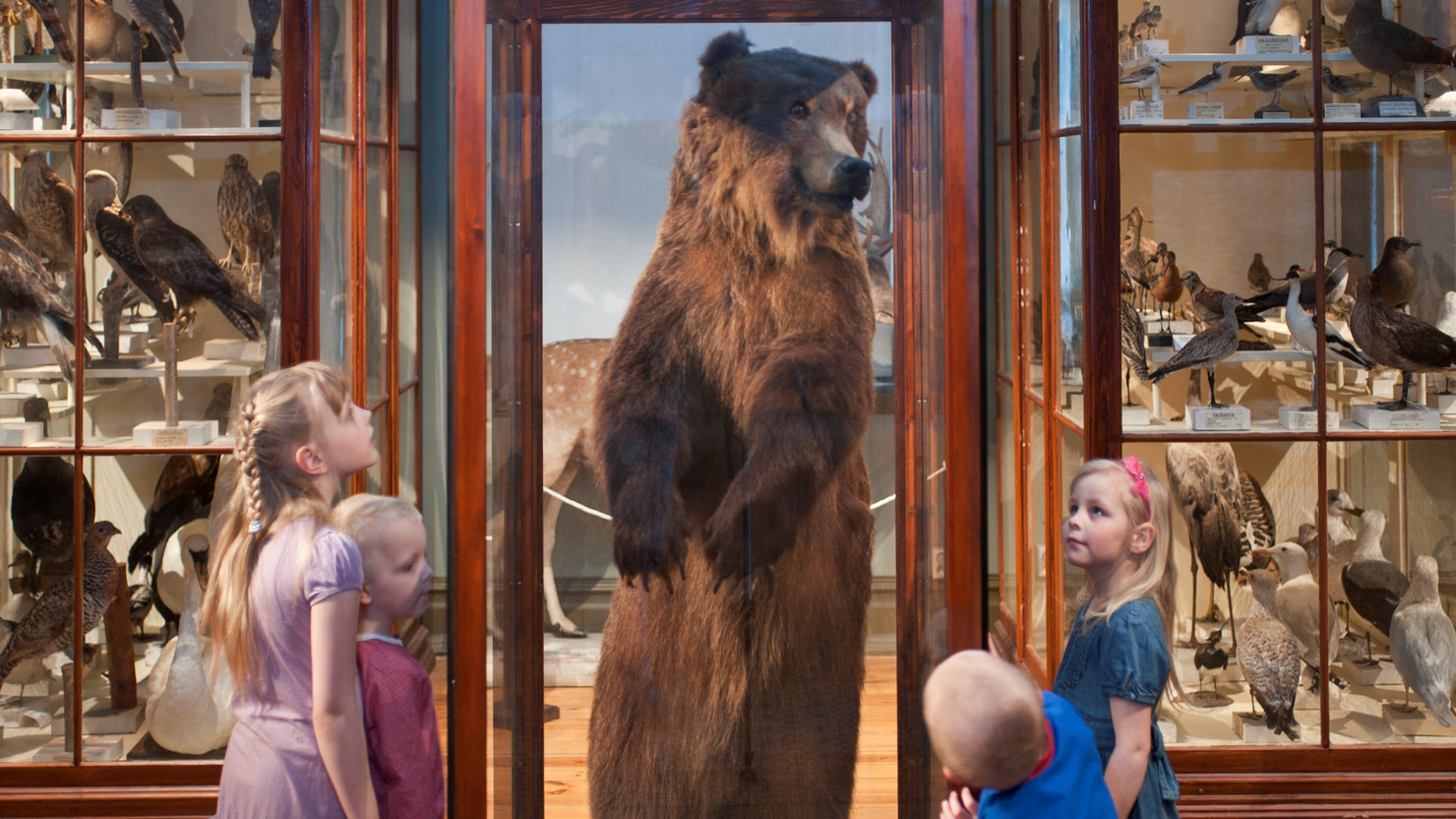The Journey of Knowledge

Sweden's only alligator caught in the wild is here, alongside Prince Wilhelm's moose together with birds, mammals, fish, minerals and scientific instruments in what was once a study collection for Vänersborg’s secondary school. In the Journey of Knowledge exhibition, you can follow the history of science and natural science collections from the time of Carl Linnaeus in the mid-18th century to the time when the museum was founded in 1885. It also provides you with an insight into the life of a pupil at a national school or a girls' school at the end of the 19th century and the school subjects that were studied at that time. You can look at the classrooms as they were or arrange your own exhibition.
Birds, minerals, a bear, a moose, a wolf, fish and an alligator (!) can be found in this exhibition.
The scholastic Institusion: Vänersborgs elementarläroverk
The Nordic animal collection has its origins in th elementarläroverk, the grammar school in Vänersborg. As early as 1860, the dynamic and eccentric principal of this school, Carl Samuel Hultström, had visions of a museum. In order to improve Swedish students knowledge of natural science the Royal Swedish Academy of Sciences was at this time donating duplicates from its collection to various schools around the country. In the autumn of 1860, Vänersborg received its allocation of birds, fish and mammals which became the basis of the school´s museum. The collection expanded was later enlarged by the addition of archaeological material, coins, medals and other antiquities.
The collections were housed in the school buildings, accessible to the students. Furthermore, in 1871 the future founder of Vänersborg Museum, Adolf Andersohn, donated a large collection of natural history objects to the small school museum. Over the years, the school collections grew and the storage area became rather full. However, when Vänersborg Museum opened in 1885, there was enough space there for the collections from the school to be displayed there as well. These continued to be enlarged by gifts and active acquisitions. Many of the objects acquired were bought and brought to the museum by the highly regarded taxidermist Gustav Kolthoff.
From Moose to Alligator
Amongst the more classical animals displayed it is worth mentioning the moose which was brought down by Prince Willhelm during one of the royal hunts at Halleberg in the 1940s. Also noteworthy is the alligator captured in the 1870s, the only wild alligator captured in Sweden.






